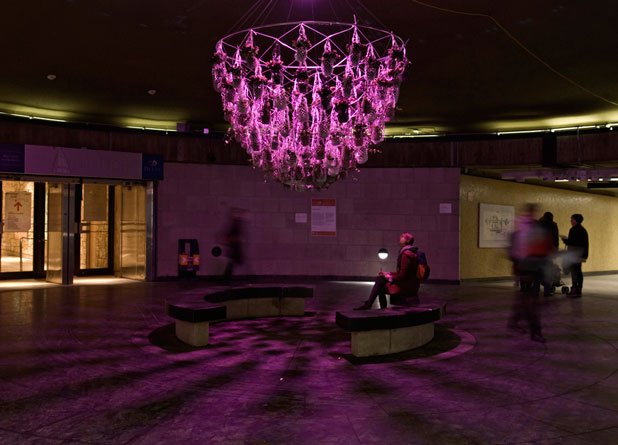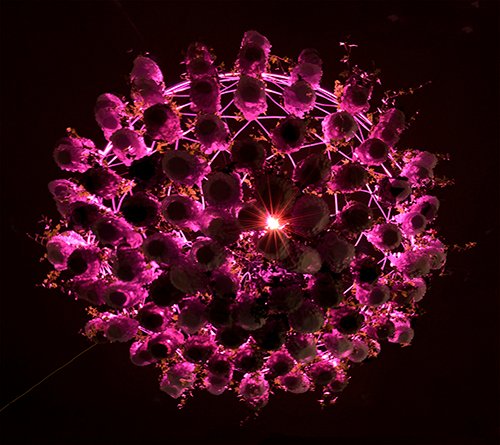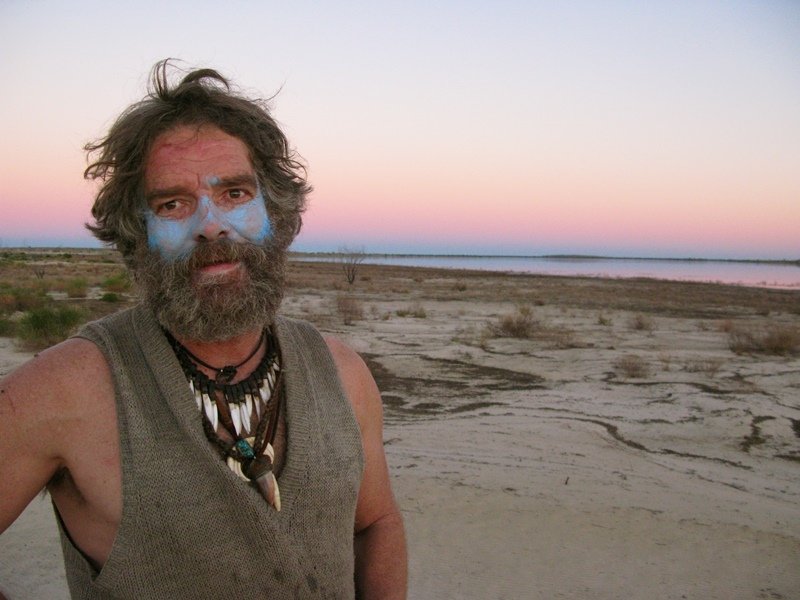Canada –
Sergio Clavijo makes use of our space by showing us what we don’t always see. His work is based on the poetics of invisible subjects like thoughts, wishes, secrets, and dreams. Emaho caught up with this Montréal-based artist to talk about his latest projects.
Emaho : Where did you start as an artist?
My art practice started over 12 years ago as an architect at the studio of Doris Salcedo. There, I built art pieces of all sorts ranging from huge public art, to knitting fibers into walls with a surgical thread. I see art as a part of life. Whatever field one ends up in as a professional, art may well have something to do with it. Years ago, I learnt that an artist points at things as a hint of something. That’s how I begin. I try to follow the path of those hints.

Sleepers, 2013
Emaho : The nature of your artwork puts it in constant conversation with public space. What draws you to blurring the edge between gallery and public spaces?
Public space is the ultimate place for art to happen. It functions as a test -field for arts’ true meaning. I like to stage a project as if passersby would be actors and their involvement in the play makes the art happen.

Sleepers, 2013
Emaho : Do you think art has a role in transforming public space?
Definitely. Art is a sort of glue that binds those two terms.

Sleepers, 2013
Emaho : Some of your work involves using secrets, and letting them disappear over time. Would you consider time and space as mediums that you work with in the same way that you work with physical materials?
I think more in terms of poetics. What our secrets or dreams behold is out of the boundaries of collective recognition; nevertheless we all frame our existence upon these. The common ground for recognition amongst each other is poetics. I do believe in the primacy of dissolving matter, of the importance of entropy in architecture and art. The transformation that went through a project like Wishing Well (2012) points directly to the fact that the artwork is performed and that the object erodes subsequently into oblivion.

Undergarden, 2011
Emaho : How do you find the balance in making work that serves a very practical purpose, while it still retains a delicate and unique aesthetic?
The realm of architecture nowadays is extremely practical and, it could be even be argued, that it’s in a sort of crisis. Architecture as a business negates much of the richness that we could eventually achieve from it. In that process, I find that the work I try to do is to drive off from that path. When I think of an art project, I find myself replacing the rules of practicality in order to accomplish an absurd ‘architectural’ product, one that is fragile instead of rigid or firm, one that is ephemeral rather than long- lasting or permanent. But my work is not a revolution or a criticism of how architecture comes about. I see it as another layer, one that shouldn’t be left behind.

Undergarden, 2011
Emaho : There seems to be a lot of technical planning and meticulous calculation that goes into what you make. What specific ideas or themes prompt you to make your art?
Making installations is always a challenge, and collective efforts don’t always have momentum. I try to take a hold of that momentum when kind people want to help, or want to get involved. I do things that depend on this effort, they point to that collective spirit of humans. It is not an organic process left to chance. Doing these installations entails a thorough supervision of how a process can go wrong or how something could eventually collapse. That has to be controlled. One has to give proper measure to many criteria, so that during a certain amount of time, things seem ordinary as if they have always existed. Discipline is very important, and meticulous calculation is a big part of the planning of these pieces.

Undergarden, 2011
Emaho : Your recent work “The Sleepers” is strikingly stark, yet it uses materials that are “live” in a sense. Could you explain your process for this piece?
More than a sound installation, “The Sleepers”, is a ‘stoppage’ in a ‘process of exchange’. “The Sleepers” is made from used material. It’s made with the actual clothes from people that sleep on the street; they were traded for new ones to make the piece. The intention behind this act is to make a sculpture that builds up a landmark in our memory, of the intricate space of those endless journeys of the homeless. Only objects of this sort are capable of achieving both a testimonial and a poetic quality for remembrance. Most of my work as an artist delves in the reconstitution of a particular material into a specific time and place. In the case of ‘The Sleepers’, I wanted to create a boundary, like a wall in a house. I would say that public space is full of such types of indeterminate boundaries, like the spaces of warmth and seclusion that serve the comfort of sleep of the homeless.

Undergarden, 2011
Emaho : Any ideas for future projects?
I just completed a video installation piece called ‘Homely’, which is exhibited at Espace Projet gallery in Montreal. It deals with ‘boundary’ conditions and is made from a collection of clumps of dust, hair and lint from a space I lived over a period of 12 months. I am also sketching a new project for a proposal. It involves the reuse of plastic #6 which would be essentially polystyrene containers composed of 98% air.
Art & Culture Interviewed by Hilary Devaney
Photographs by Sergio Clavijo













